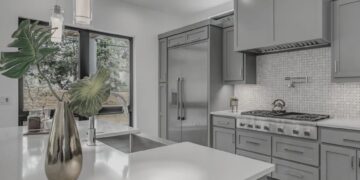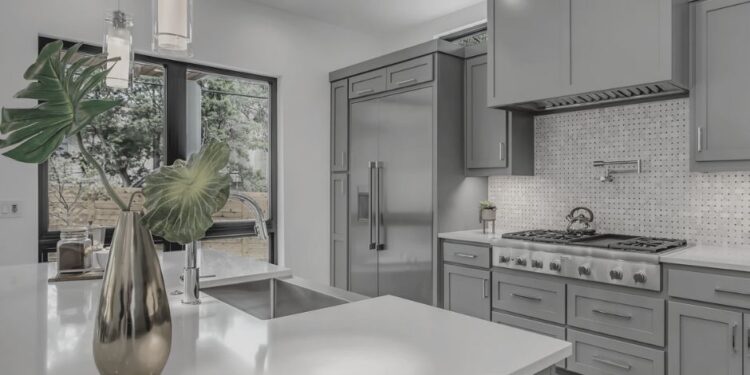When it comes to home renovations, many people focus on structural changes like knocking down walls, upgrading kitchens, or adding new rooms. While these changes are important, one element that often gets overlooked is interior design. The right interior design can transform a renovated space into something truly special. It’s not just about making a space look good—it’s about creating a functional and comfortable environment that suits your lifestyle.
In this article, we’ll explore why interior design plays such an important role in home renovations and how it can make a big difference in your overall project.
What is Interior Design?
Interior design is the art and science of enhancing the inside of a space to make it more functional, visually appealing, and reflective of the people living there. It involves choosing colours, furniture, lighting, and decorations that work together to create a cohesive look. But more than just aesthetics, interior design also focuses on how a space feels and functions.
When you’re doing a home renovation, thinking about the interior design from the start ensures that your newly renovated space doesn’t just look nice but also meets your practical needs.
Why Interior Design is Essential in Home Renovations
1. Maximising Space
One of the key benefits of good interior design is that it helps you maximise the space you have. A well-designed room feels bigger and more open, even if the actual square footage hasn’t changed. This is especially important in smaller homes or flats where every inch of space matters.
Interior designers are skilled at making small spaces more functional by using clever storage solutions, arranging furniture in a way that maximises flow, and choosing colours and lighting that make the space feel more open.
2. Improving Functionality
A home renovation isn’t just about making things look new; it’s also about improving how the space works for you and your family. This is where interior design comes in. Whether you’re renovating your kitchen, living room, or bedroom, interior design helps ensure that the layout is practical and meets your needs.
For example, in a kitchen renovation, an interior designer will think about how you move around the space, where you need extra storage, and how to place appliances so that cooking becomes easier and more enjoyable.
3. Creating a Cohesive Look
When you renovate different rooms in your house, it’s easy for the styles to clash if you don’t have a clear plan for the overall design. Interior design helps create a cohesive look throughout the entire house. It ties together different spaces with complementary colours, materials, and styles.
This gives your home a unified and polished feel, making it more comfortable and visually appealing.
4. Enhancing Comfort
Your home should be a place where you feel relaxed and at ease. Interior design plays a big role in creating a comfortable environment. Choosing the right furniture, fabrics, and lighting can make a space feel cosy and inviting. Even small details, like the arrangement of furniture or the type of lighting used, can impact how comfortable a room feels.
When you focus on interior design during a home renovation, you’re making sure that the space isn’t just functional but also comfortable for everyday living.
5. Boosting Property Value
If you’re planning a home renovation to increase the value of your property, interior design is something you shouldn’t ignore. A well-designed home appeals to potential buyers because it looks modern, functional, and stylish. Homes with thoughtful interior design tend to sell faster and at higher prices.
For instance, if you’re undergoing a home renovation in London, incorporating stylish and functional interior design elements can make your property stand out in the competitive market. Buyers in urban areas often appreciate design details that maximise space and create a modern, comfortable atmosphere.
How to Incorporate Interior Design into Your Home Renovation
1. Start with a Plan
Before starting your home renovation, it’s important to have a clear plan for the interior design. Think about the style you want, how you’ll use each space, and any specific needs you have. It’s helpful to work with an interior designer who can guide you through the process and help create a design that fits your vision.
2. Choose a Consistent Style
To create a cohesive look throughout your home, choose a consistent style or theme that ties everything together. Whether it’s modern, traditional, or minimalist, having a clear design style will make the renovation process smoother and ensure all your rooms work well together.
3. Don’t Forget About Lighting
Lighting is a crucial part of interior design that is often overlooked. The right lighting can make a space feel larger, brighter, and more welcoming. During your renovation, consider installing different types of lighting (such as ambient, task, and accent lighting) to enhance the functionality and mood of each room.
4. Use Colours Wisely
Colour plays a big role in setting the mood of a room. Lighter colours can make a room feel larger and more open, while darker colours can create a cosy, intimate atmosphere. Choose colours that complement each other and match the overall style of your home.
Conclusion
Interior design is a vital part of any home renovation. It helps you make the most of your space, improves functionality, and ensures that your home looks cohesive and stylish. Whether you’re doing a small remodel or a large-scale renovation, incorporating interior design into your plan will make a big difference in the final result.
If you’re undergoing a home renovation in London or any other location, don’t underestimate the power of good interior design. It’s not just about making your home look beautiful—it’s about creating a space that works for you and feels like home.








































